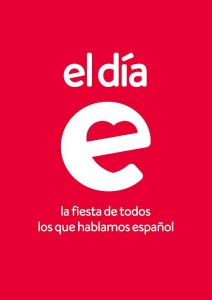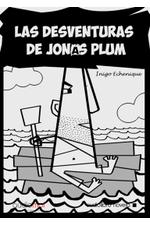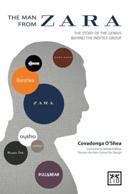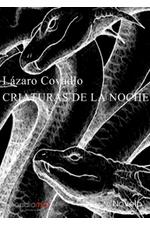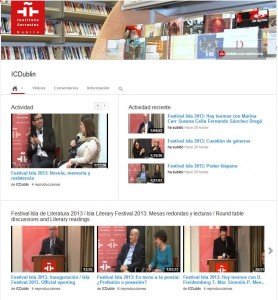Blog del Instituto Cervantes de Dublín
Torre Martello
Cultural Day | Día cultural: El Día E
El Día E, our big celebration of Spanish language comes again! Do not miss our spectacular programme and join us on Saturday 22nd from 11am to 6 pm. Music, food tasting from Spain and South America, free classes, activities for children and much, much more!!!
More than 500 million people speak Spanish. In terms of native speakers, Spanish is the second most widely spoken language in the world, the second most widely used language for global communication and the third language most widely used on the Internet. On the 22nd June, all of the Instituto Cervantes centres are once again opening their doors to the public in celebration of the Spanish language.
Expect a wide range of activities for all age groups – balloon twisting for the little ones, Flamenco dance, Latin American food, a tortilla making competition, a free Sevillanas dance class, karaoke and much more!
As usual, we’re inviting everyone to take part in our free Spanish classes and visit our library where we’ll be having a book sale, conversation exchange and guided tours.
PROGRAM
- 11:00-12:30 Children’s Activities. Balloon Twisting. (Café Literario)
- 11:00-11:15 Express Spanish: Free Spanish Class for Beginners (Room 6)
- 12:00-14:30 Food Fair (Exhibition Room)
- 12:00-12:15 Free Class for DELE Preparation (Room 6)
- 12:30-13:00 Short stories Competition Prizes and DELE raffle (Café Literario)
- 13:00-14:00 Tortilla Competition (Café Literario)
- 13:00-13:15 Free AVE Class (Biblioteca)
- 15:30-15:45 Flamenco Demonstration with Flamenco Ireland (Café Literario)
- 16:00-17:00 Free Sevillanas Dance Class(Café Literario)
- 15:30-17:00 Book Sale, Conversation Exchange and Guided Tours in the Library
- 17:00-18:00 Karaoke Competition + Open Mic (Café Literario)
El Día E, nuestra gran celebración de la lengua española, ¡ vuelve de nuevo! No te pierdas nuestro espectacular programa y únete a nosotros el sábado 22 desde las 11:00 de la mañana hasta las 18:00 de la tarde. Música, feria gastronómica de España y Sudamérica, actividades para niños y ¡¡¡mucho, mucho más!!!
Más de 500 millones de personas hablan español. El español es la segunda lengua del mundo en cuanto a número de hablantes nativos, el segundo idioma de comunicación internacional y el tercer idioma más utilizado en Internet. El 22 de junio todos los centros del Instituto Cervantes abrirán nuevamente sus puertas para sumarse a esta fiesta.
Desde el centro de Dublín hemos preparado una jornada de puertas abiertas de 11h a 18h que incluirá actividades variadas para todas las edades, desde globoflexia para los más pequeños hasta una demostración de flamenco, una clase gratuita de sevillanas, una muestra gastronómica de América Latina, concurso de karaoke, concurso de tortilla y muchas sorpresas más.
Y como cada año les invitamos también a participar en nuestras clases gratuitas de español y a pasarse por nuestra biblioteca donde tendremos un bazar de libros, intercambios de conversación y visitas guiadas.
PROGRAMA:
- 11:00-12:30 Verbena infantil. Globoflexia. (Café Literario)
- 11:00-11:15 Español Exprés: Clase gratuita de español para principiantes (Aula 6)
- 12:00-14:30 Feria gastronómica (Sala de Exposiciones)
- 12:00-12:15 Clase gratuita de preparación al DELE (Aula 6)
- 12:30-13:00 Entrega de premios del Concurso de mini relatos y sorteo de premios del DELE (Café Literario)
- 13:00-14:00 Concurso de tortilla (Café Literario)
- 13:00-13:15 Clase gratuita de AVE (Biblioteca)
- 15:30-15:45 Demostración de Flamenco de la compañía Flamenco Ireland (Café Literario)
- 15:30-17:00 Bazar de libros, intercambio de conversación y visitas guiadas en la Bibioteca
- 16:00-17:00 Clase gratuita de Sevillanas (Café Literario)
- 17:00-18:00 Concurso de karaoke + Micrófono abierto (Café Literario)
Film screening | Cine: Días de fútbol
 Today is the last session of the 10 years entertaining through laughter, singing, dancing and…football film series. You still have the chance to taste the very best of Spanish cinema with the comedy Football Days. The film is at 6pm at Café Literario and the producer Tomás Cimadevilla will be with us to explain all the ins and outs of the film.
Today is the last session of the 10 years entertaining through laughter, singing, dancing and…football film series. You still have the chance to taste the very best of Spanish cinema with the comedy Football Days. The film is at 6pm at Café Literario and the producer Tomás Cimadevilla will be with us to explain all the ins and outs of the film.
Jorge is thirty and thinks his life can’t possibly get any worse. He finds his work depressing and his girlfriend leaves him when he asks her to marry him. But things can always get worse and to see the truth in this he only has to look at his friends. Ramón can’t decide what gets at him most; his wives crazy ideas or his lost battle against baldness. Gonzalo has been studying law for as long as he’s been looking for a girlfriend. Carlos hopes to become an important actor but has got no further than a minor part in the teleshop. Miguel is a policeman and the father of a family but his dream is to be a singersongwriter; that is if his wife lets him. The only one who seems to have his life under control is Antonio but this doesn’t mean much as he has just come out of prison. The brilliant solution for changing their lives is to set up the football team they had in their youth and finally win something in life even if it’s only the Football 7 trophy.
2.5 million spectators watched this movie in cinemas.
Hoy es la última sesión del ciclo 10 años haciendo reír, cantar, bailar y… jugar al fútbol. Todavía tienes la oportunidad de saborear lo mejor del cine español con la comedia Días de fútbol. La película es a las 18:00 en el Café Literario y el productor Tomás Cimadevilla estará con nosotros para contarnos los entresijos del film.
Jorge tiene treinta años y piensa que su vida no puede empeorar. Su trabajo le deprime y su novia le deja cuando él le pide matrimonio. Pero las cosas siempre pueden ir a peor y como muestra sólo hay que echar un vistazo a sus amigos: Ramón no sabe que le saca más de quicio, si las ocurrencias de su mujer, o su más que perdida lucha contra la alopecia; Gonzalo lleva tanto tiempo estudiando Derecho como buscando novia; Carlos aspira a ser un gran actor pero no ha pasado de ser secundario en la teletienda; Miguel es policía y padre de familia pero su sueño es ser cantautor, eso si su mujer le deja. El único que parece llevar controladas las riendas de su vida es Antonio, pero eso no quiere decir mucho teniendo en cuenta que acaba de salir de la cárcel. La brillante solución para cambiar sus vidas es volver a montar el equipo de fútbol que tenían de jóvenes, y por fin ganar algo en su vida, aunque sea un trofeo de fútbol 7.
Esta película tuvo 2,5 millones de espectadores en cines.
Seminar and tasting: Rias Baixas | Seminario y cata de vino: Rias Baixas
ONLY A FEW SPACES LEFT!!!
Have you heard about the delicious wines from Rias Baixas? This Thursday at 6.30 pm you have the chance to enjoy a 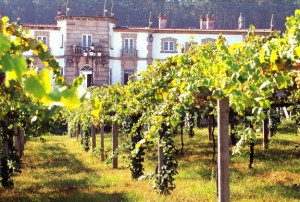 workshop in English where you will learn more about the most renowned wines from Galicia and you will also taste six samples of wines from Rías Baixas. This activity is part of the Celtic Extravaganza: Galicia and El Camino Festival.
workshop in English where you will learn more about the most renowned wines from Galicia and you will also taste six samples of wines from Rías Baixas. This activity is part of the Celtic Extravaganza: Galicia and El Camino Festival.
The fee for this workshop is €15. You can come to our office to register or you can do it on-line if you follow this link:
https://clicdublin.cervantes.es/en/activities
Lisa O’ Doherty is an award winning sommelier with over 10 years experience as chief sommelier at the famous Irish 5 red star resort “The K Club”, home of the 2006 Ryder Cup.
The renowned sommelier Lisa O’Doherty will share her last trip to Rías Baixas and love for this Celtic area in Spain. She will introduce us to one of the most trendy wines in US and its core grape: albariño. 6 Rias Baixas wines will be tasted in this 90 minutes seminar.
The Designation of Origin Rías Baixas (pronounced ree-ahs buy-shuss) is the cool coastal home of the Albariño grape, located in the Celtic region of Galicia and produces some of Spain’s finest white wines.
¡¡¡ÚLTIMAS PLAZAS DISPONIBLES!!!
¿Conoces los deliciosos vinos de las Rias Baixas? Este jueves a las 18:30 tienes la oportunidad de disfrutar de un taller en inglés en el que además de aprender sobre los vinos más reconocidos de Galicia podrás también saborear seis vinos de Rias Baixas.
La actividad está dentro del festival La experiencia celta: Galicia y el Camino de Santiago.
El precio de la entrada del taller es de €15. Puedes venir a nuestra oficina directamente o matricularte desde casa a través del siguiente enlace:
https://clicdublin.cervantes.es/en/activities
La Denominación de Origen Rias Baixas es la franja costera y fría donde se cultiva la uva Albariño. Se sitúa en la región celta de Galicia y produce algunos de los mejores blancos de España.
La reconocida sommelier Lisa O’Doherty compartirá con el público su último viaje a las Rias Baixas y su amor por esta región celta de España. Dará a conocer uno de los vinos más de moda en EEUU y su cepa principal: Albariño. En este seminario de 60 minutos de duración se degustarán 6 vinos de Rias Baixas.
Lisa O’Doherty ha recibido numerosos premios durante sus 10 años de experiencia como sommelier jefe del famoso complejo turístico irlándés de 5 estrellas, The K Club, sede de la Ryder Cup 2006.
Audiobook of the week | Audiolibro de la semana: Las desventuras de Jonás Plum
We can guarantee loads of fun with the audiobook of this week: Las desventuras de Jonás Plum by Íñigo Echenique. If you want to meet this unforgettable character, just take your library card and click on the link to download this audiobook.
Jonás Plum is the hero of this story that starts in his homeland where he’s a cabin boy and ends in an unknown island in the Caribbean where he writes his memories. He lives a journey like we’ve never seen before, full of absurdity and disasters.
At the mercy of a destiny whose keys he tries to decipher, our naive hero will face the biggest difficulties of a troubled era with determined spirit and candid boldness. Trying to learn scientific knowledge from Clipercuff, his mentor and partner in crime in all his adventures, Jonás will ride a bizarre animal, train a rotten biscuit, become friends with natives and finally will end up fighting for the French Imperial Army against the fierce pirate Barbaverde.
This is a highly original story that it would definitely be worth reading more than once.
Te garantizamos pasarlo de maravilla con el audiolibro de esta semana: Las desventuras de Jonás Plum de Íñigo Echenique. Si deseas conocer a este personaje inolvidable coge tu tarjeta de la biblioteca y pulsa en el enlace para descargarte el audiolibro.
Desde que parte de su tierra natal como grumete, hasta que completa sus memorias en una isla ignota del Caribe, Jonás Plum concluye un periplo de disparates y calamidades nunca vistos en la literatura de aventuras. A merced de un destino cuyas claves se obstina en descifrar, este cándido protagonista afrontará las mayores dificultades de una época turbulenta con ánimo resuelto e inocente insensatez.
Procurando asimilar los conocimientos científicos de su mentor y compañero de aventuras, Clipercuff, Jonás cabalgará a lomos de un rarísimo animal, amaestrará una galleta podrida, confraternizará con los indígenas y acabará combatiendo al servicio de la armada imperial francesa en su lucha contra el feroz pirata Barbaverde.
Es este un relato originalísimo y desternillante, digno no ya de ser leído, sino releído infinidad de veces.
Discussion | Charla: The Camino Experience
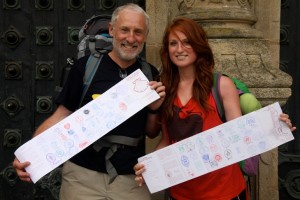 The Celtic Extravanganza: Galicia and El Camino Festival brings us a new event today at 6.30pm in Café Literario. It’s a very special talk about the experience of doing the Camino de Santiago. If you haven´t done it yet, you can get inspired by this talk and start to organize your own trip!
The Celtic Extravanganza: Galicia and El Camino Festival brings us a new event today at 6.30pm in Café Literario. It’s a very special talk about the experience of doing the Camino de Santiago. If you haven´t done it yet, you can get inspired by this talk and start to organize your own trip!
Irish Times journalist Peter Murtagh and his then 18-year-old daughter Natasha walked the Camino Santiago de Compostela from the Pyrenees to Finesterre and wrote a book together, Buen Camino! It tells the story of the people they met along the way and their feelings for each other.
Illustrated talk of 45 minutes with live Galician music by singer Susana Garrido.
El festival La experiencia celta: Galicia y el Camino de Santiago continúa hoy con un nuevo evento a las 18:30 en el Café Literario. Se trata de una charla muy especial sobre la experiencia de recorrer el Camino de Santiago. Si todavía no lo has hecho, puedes inspirarte por esta charla y ¡empezar a organizar tu propio viaje!
El periodista del Irish Times Peter Murtagh y su hija Natasha, que entonces tenía 18 años, recorrieron el Camino de Santiago desde Los Pirineos hasta Finisterre y juntos escribieron el libro Buen Camino!, que narra las historias de las personas que conocieron en el camino y las lazos de amistad que se crearon.
Charla ilustrada de 45 minutos de duración, seguida de música gallega en vivo por la cantante Susana Garrido.
Exhibition | Exposición: José Guadalupe Posada. 100 years
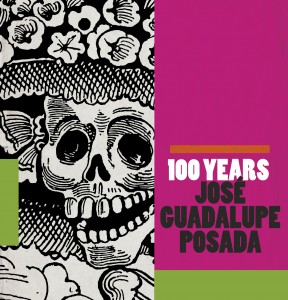 We invite you to enjoy today the official opening of a new exhibition organized by the Embassy of Mexico in Ireland: José Guadalupe Posada. 100 years. The event will be today at 7pm in the Exhibition Room. You can enjoy this fantastic work until July 4th.
We invite you to enjoy today the official opening of a new exhibition organized by the Embassy of Mexico in Ireland: José Guadalupe Posada. 100 years. The event will be today at 7pm in the Exhibition Room. You can enjoy this fantastic work until July 4th.
José Guadalupe Posada (1852-1913) is one of Mexico’s maximum exponents in universal plastic. His work has positioned itself in the collective imagination as synonymous with Mexican culture. It is just enough to mention one of his masterworks, the Calavera Catrina, as the benchmark of the ancestral celebration of the Day of the Dead, recognized and admired internationally.
A hundred years after the death of Posada, the exhibition covers the last decade of the Nineteenth Century and the first of the Twentieth, a period in which Posada consolidated what history set out as theorigin of Mexican popular graphic, and influenced decisively in various forms of art that resulted in the so-called nationalist movement, just after the Mexican Revolution.
This exhibition features over one hundred original pieces grouped into three themes: Daily Life, Disasters and Calaveras. The exhibition, presented in Dublin by the Embassy of Mexico in Ireland and the Cervantes Institute in collaboration with the Government of Aguascalientes, has been integrated by the Mexican National Institute of Fine Arts (INBA), the National Council for Culture and the Arts (CONACULTA), the Cultural Institute of Aguascalientes, México (ICA) and the José Guadalupe Posada Museum.
Opening hours: Mon-Thu: 3-7pm, Sat: 10am-2pm
Hoy estás invitado a asistir a la inauguración oficial de nuestra nueva exposición: José Guadalupe Posada. Cien años, organizada por la Embajada de México en Irlanda. Te esperamos hoy a las 19:00 en la Sala de Exposiciones. Tendrás la oportunidad de disfrutar de este fantástico trabajo hasta el 4 de julio.
José Guadalupe Posada (Aguascalientes, México, 1852 – Ciudad de México, 1913) en su época fue un modesto artesano ilustrador de impresos. Con el paso de los años su aportación resultó tan significativa que actualmente es el artista que mayor influencia tiene en la mayoría de los grabadores mexicanos del siglo XX. La vigencia de su obra continúa hasta nuestros días en el arte popular y seguramente su legado permanecerá por muchos años como ejemplo para artistas y diseñadores gráficos. Buena parte de sus creaciones se han convertido en iconos de la cultura mexicana. A nivel internacional cualquiera de sus estampas representa orgullosamente la identidad del pueblo mexicano.
Horario: Lunes a jueves de 15:00-19:00, Sabado: 10:00-14:00
Book launch | Presentación de libro: The Man from Zara
THIS EVENT IS FULLY BOOKED
Writer and entrepeneur Covadonga O’Shea will be today with us for the book launch of her last book: The Man from Zara. The event will be held today at 6.30pm in Café Literario.
Inditex –the group behind Zara, Massimo Dutti, Oysho, Bershka– is today a major force in the world of high street fashion. It recently outranked Gap as the No.1 clothes retailer in the world. In virtually every city in the world, you will see one or more of Inditex’s shops –Zara being the most conspicuous. Yet little is known about this amazing success. This book offers such an insight by telling the story of the genius behind the Inditex Group -Armancio Ortega. Besides being one of the world’s richest men, Ortega is the brains behind a modern-day revolution in textiles and fashion retail. Through unprecedented access to Ortega and his closest aides, the author provides a compelling and unique biography of the man responsible for one of this century’s most extraordinary business successes.
Spanish wine will be served.
ESTE EVENTO TIENE EL AFORO COMPLETO
La escritora y empresaria Covadonga O’Shea estará hoy con nosotros para la presentación de su nuevo libro El hombre que creó Zara. El evento es hoy a las 18:30 en el Café Literario.
¿Un genio empresarial? ¿Un visionario? ¿Un trabajador infatigable y apasionado? Todo esto y mucho más parece ser Amancio Ortega, el hombre que creó el imperio Zara y que por primera vez habla en un libro acerca de su vida y de su empresa.Covadonga O’Shea, periodista y presidenta del Instituto Superior de Empresa y Moda (ISEM), conoce a Ortega desde el año 1990, cuando visitó por primera vez las instalaciones de Inditex en Arteixo. Horas de conversación con el propio Amancio y las personas cercanas a él la han convertido en testigo directo del recorrido de esta empresa, del motor que se esconde detrás de la misma, de cómo viven sus empleados, de los talleres, de cómo se ha forjado la riqueza personal de su fundador, de los proyectos de futuro, de la sencillez de un triunfador. Una obra para descubrir a un personaje que, a pesar de haberse convertido en referencia de las escuelas de negocios del mundo entero y de haber revolucionado el mundo de la moda, sigue pensando que “la autocomplacencia es lo peor si quieres conseguir hacer algoimportante”.
Se servirá vino español.
Audiobook of the Week | Audiolibro de la semana: Criaturas de la noche
Criaturas de la noche by Argentinian writer Lázaro Covadlo is our audiobook of the week. Don’t you know how to use our audiobooks service yet? Well, it’s as simple as taking your library card and click on the link.
“A modern fable, wonderfully written and also original”. That’s how the jury of the Café Gijón Award defined this novel about a clumsy and failed man who has a very special flea living inside his ear. This flea dictates convincing speeches to impose its evil willpower in exchange for rescuing him from his misery and lack of affection. With this novel Covadlo steadies himself as one of the most fascinating writers of contemporary writers.
Criaturas de la noche del escritor argentino Lázaro Covadlo es nuestro audiolibro de la semana. ¿Todavía no sabes como usar nuestro servicio de audiolibros? Pues es muy simple, coges tu carnet de la biblioteca y pulsas en el enlace.
“Una fábula moderna, extraordinariamente escrita y además original.” Así definió el jurado del premio Café Gijón esta novela, que trata de un hombre patoso y fracasado, a quien una pulga muy particular que se ha instalado en su oído, dicta discursos convincentes con los que pretende imponer su voluntad diabólica a cambio de rescatarlo de la miseria y el desamor. Con esta novela, Covadlo afianza una de las trayectorias más fascinantes de la literatura contemporánea.
Workshop: Creative Saturdays. Handcraft workshop for children aged 10-12 | Taller: Sábados creativos. Manualidades para niños de 10 a 12 años
We always keep in mind our younger audience and this Saturday we bring you a handcraft workshop in Spanish for children aged 10-12. The workshop will start at 12:15 and will finish at 1.30pm.
The workshop is designed for children to enjoy creating original and decorative objects or gifts using materials you can find at home (plastic bottles, tetra bricks, cereal boxes,…).
The different crafts will be adapted to each child skills. In the 10-12 years group children will create a wallet, bracelets, gift cards and a paper-box organizer for their desktop.
Workshop conducted in Spanish by Raquel Hernanz.
Raquel Hernanz holds a degree in sociology and has ample experience as educator, Spanish teacher for children and children’s entertainer. She conducts handcraft and ballon twisting workshops.
The fee is €10 and you can register on line: https://clicdublin.cervantes.es/en/activities
El público más joven también tiene su sitio en nuestra programación y este sábado te traemos un taller de manualidades en español para niños de entre 7 y 9 años. El taller comenzará a las 12:15 y termina a la 13:30.
El taller está diseñado para que usando materiales cotidianos, los niños disfruten creando objetos decorativos y regalos originales.
Las diferentes manualidades se adaptaran a las destrezas de cada niño. En el grupo de 10-12 años los niños crearan tarjetas de regalo, una cajita organizadora para su escritorio, un monedero y pulseras.
Taller impartido en español por Raquel Hernanz.
Raquel Hernanz es licenciada en sociología y tiene una amplia experiencia como educadora, profesora de español para niños y animadora infantil. Asimismo es especialista en manualidades y globoflexia.
El precio del taller es de 10€. Te puedes registrar en línea a través del siguiente enlace: https://clicdublin.cervantes.es/en/activities
Film screening | Cine: Días de cine
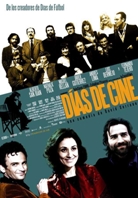 Dias de cine is the comedy that you cannot miss today at 6pm at Café Literario. Once again Tomás Cimadevilla, producer of the film will be with us to tell us all the secrets of the film.
Dias de cine is the comedy that you cannot miss today at 6pm at Café Literario. Once again Tomás Cimadevilla, producer of the film will be with us to tell us all the secrets of the film.
A comedy set in 1977 in which a prestigious, anti-francoist playwright tries to film a drama of social condemnation starring a downcast folksinger who was a former child prodigy. A lying producer with a lot of cheek produces the film. Inexperience, ambition, the lack of means and the director’s love-hate relationship with the star mean the shooting descends into madness.
Días de cine es la comedia que proyectamos hoy a las 18:00 en el Café Literario. ¡No te la pierdas! Una vez más Tomás Cimadevilla, productor de la película, estará con nosotros para contarnos todos los secretos del rodaje.
Comedia ambientada en 1977, en la que un prestigioso autor de teatro y antifranquista intenta rodar un drama de denuncia social protagonizado por una folclórica de capa caída, antigua niña prodigio y producida por un productor mentiroso y caradura. La inexperiencia, la ambición, la falta de medios y la relación amor-odio del director con la protagonista convertirán el rodaje en una locura.
Lecture: The Irish Literature in Spain | Conferencia: La literatura irlandesa en España
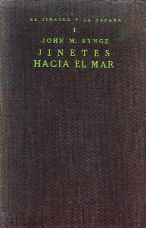 The second talk of the Historical Dialogues series will be held today at 6.30pm in Café Literario. Professor Antonio R. de Toro will be with us to talk about the Irish Literature in Spain.
The second talk of the Historical Dialogues series will be held today at 6.30pm in Café Literario. Professor Antonio R. de Toro will be with us to talk about the Irish Literature in Spain.
The Nobel Prize Juan Ramón Jiménez was very familiar with the writers of the Irish revival. His reading of Yeats is well-documented, and in a hand-written list for the years 1917-1920 he also notes the four major writers of the early years of the century in Ireland: A.E., Yeats, Lady Gregory and Synge. Juan Ramón Jiménez confesses that at the beginning of the century the poets who most profoundly influenced him were Irish. This interest is also reflected in his and his wife Zenobia’s translation of Synge’s Riders to the Sea into Spanish in 1920. After 1916 his translations of poetry included works by A.E. and Yeats, as he admits in a letter to Luis Cernuda.
According to Jiménez, Riders to the Sea left its mark on García Lorca’s Bodas de sangre. And Ian Gibson goes on to state that this play may not had been written had not Lorca read Synge’s play.
Several Irish literary works were translated into Spanish. Apart fom Synge’s play, Alfonso Donado’s translation (pseudonym of Dámaso Alonso) of Joyce’s A Portrait of the Artist as a Young Man, rendered as El artista adolescente and published in Madrid in 1926 and soon afterwards William Butler Yeats.
The authors mentioned above are not the only Irish writers translated into Spanish in book form, but only those, with the exception of Joyce, who were related in some way to the Irish Literary Revival.
Antonio R. de Toro is professor of English Philology at the Universidade da Coruña. He is director of Amergin University Institute of Research in Irish Studies. Vicente Risco (Orense, 1884-1963), influenced by James Joyce’s work, was one of the most influential and complex figures of Galician literature.
La segunda conferencia del ciclo de conferencias Diálogos Históricos será hoy a las 18:30 en el Café Literario. El profesor Antonio R. de Toro estará con nosotros para hablarnos sobre la literatura irlandesa en España.
El Premio Nobel Juan Ramón Jiménez era buen conocedor de los escritores del Renacimiento irlandés. Sus lecturas de Yeats están bien documentadas y en una lista manuscrita que abarca los años 1917-1920 Juan Ramón destaca los cuatro escritores irlandeses más importantes de principios del siglo XX: A.E.: Yeats, Lady Gregory y Synge. Juan Ramón Jiménez llegó a admitir que los poetas de principios del siglo XX que ejercieron una mayor influencia en su obra eran irlandeses. Este interés también se refleja en su versión de la obra Jinetes hacia el mar (Riders to the Sea) que él y su esposa Zenobia tradujeron al español. A partir de 1916 sus traducciones de poesía incluyen obras de A.E y de Yeats, tal y como se lo comunica en una carta a Luis Cernuda.
En opinión de Juan Ramón Jiménez, Jinetes hacia el mar influenció la obra Bodas de Sangre de Federico García Lorca. Ian Gibson ha llegado a afirmar que esta obra no se habría escrito si Lorca no hubiese leído la obra de Synge.
La literatura irlandesa traducida al español es variada. Además de la obra de Synge mencionada, se encuentra la traducción de la obra de Joyce El artista adolescente (A Portrait of the Artist as a Young Man) de Alfonso Donado (seudónimo de Dámaso Alonso) y publicada en 1926 en Madrid. Un poco más adelante se tradujeron obras de William Butler Yeats.
Los autores aquí mencionados no son los únicos escritores irlandeses traducidos y publicados en español, pero son los únicos, a excepción de Joyce, que estaban relacionados en cierta medida con el Renacimiento literario irlandés.
Antonio R. de Toro es catedrático de Filología inglesa de la Universidad de A Coruña y director del Instituto Universitario de Investigación de Estudios Irlandeses “Amergin”.
The Way of Saint James / El Camino de Santiago
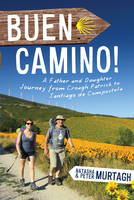
Nuestro tema del mes es el Camino de Santiago, una de las principales rutas culturales europeas. Cada año miles de peregrinos procedentes de toda España y Europa recorren un largo trecho para llegar a la ciudad de Santiago de Compostela, donde se veneran las reliquias del apóstol Santiago el Mayor. La creencia cada vez más extendida en los milagros de Santiago, provocó que la gente comenzara a peregrinar hacia Santiago de Compostela para obtener su gracia.
El Camino de Santiago significó el primer elemento vertebrador del viejo continente en la historia europea y supuso encontrar un punto de referencia indiscutible en el que podía converger la pluralidad de distintos pueblos ya cristianizados pero necesitados en aquel entonces de unidad.
Ha estado unido indisociablemente a la cultura, a la formación y a la información. Lo que se decía, predicaba, contaba, cantaba, esculpía o pintaba en el camino alcanzaba siempre a más gente y a más lugares. Gracias a su influjo en el arte y la literatura, Compostela junto con Jerusalén y Roma se convirtió en meta de la sociedad cristiana, especialmente a partir del siglo XI al XIV. El camino llegaría a ser un foco catalizador de toda la sociedad cristiana.
Durante toda la Edad Media fue muy popular, después fue ligeramente olvidado debido a diversos factores (la peste, la reforma protestante y los conflictos políticos). En la época actual ha vuelto a tomar un gran auge. El Camino de Santiago Francés y las rutas francesas del Camino fueron declarados por la Unesco Patrimonio de la Humanidad en 1993 y 1998 respectivamente, Itinerario Cultural Europeo por el Consejo de Europa y ha recibido el título honorífico de Calle mayor de Europa. En el Año Santo Compostelano de 1993, el gobierno autónomo gallego decidió potenciar su valor enfocado a un recurso turístico, de este modo se lanzó una gran campaña de publicidad para el Jacobeo de ese año: Xacobeo 93. Gracias a este plan se restauraron tramos de la ruta y las infraestructuras para peregrinos.
Desde entonces, hacer el recorrido a pie, en bicicleta o a caballo e incluso en burro es un destino popular que reúne lo religioso, espiritual, deportivo, cultural, económico, etc., tal y como ha venido ocurriendo desde el principio a través de los siglos. El camino se halla indicado por flechas pintadas de amarillo, postes y otras señales. La mayoría de los peregrinos llega a Santiago por el llamado “Camino Francés”, pero existen otras seis rutas históricas por las cuales se puede hacer el camino santo.
Si quieres preparar tu viaje de peregrinación a Santiago o simplemente saber más sobre el Camino, en la biblioteca tenemos una amplia selección de obras que te pueden ayudar.
Our topic of the month is the Camino de Santiago (The Way of St James), one of the most important European cultural routes. Every year thousands of pilgrims coming from all parts of Spain and Europe go a long distance until arriving to Santiago de Compostela where the remains of the apostle Saint James are venerated. It started when people started to believe in St James’ miracles and therefore they started to do the pilgrimage to Santiago to get his grace.
Camino de Santiago was the first backbone of the old continent in the European history and an indisputable reference point where the different conceptions of Christian peoples could find a common unity.
It has been linked inherently to culture, education and information. Everything that was said, preached, told, sung, sculpted or painted in the Camino got to a large number of people and places. Thanks to its influence in art and literature, Compostela along with Jerusalem and Rome became a meeting point of Christian society, especially between the 11th and 14th century.
It was highly travelled during the Middle ages but several factors (the Black Death, the Protestant Reformation and political unrest) led to its decline. By the 1980s, only a few pilgrims per year arrived in Santiago. Later, the route attracted a growing number of modern-day pilgrims from around the globe. The route was declared the first European Cultural Route by the Council of Europe in October 1987; it was also named one of UNESCO’s World Heritage Sites in 1993.
In 1993, a Jubilee Year, the Galician government decided to increase its popularity and planned a big advertising campaign to promote the Camino and the infrastructures were highly improved.
Today tens of thousands of Christian pilgrims and many other travellers set out each year from their front doorstep, or popular starting points across Europe, to make their way to Santiago de Compostela. Most travel by foot, some by bicycle, and a few travel as some of their medieval counterparts did, on horseback or by donkey.
In addition to people undertaking a religious pilgrimage, the majority are travellers and hikers who walk the route for non-religious reasons: travel, sport, or simply the challenge of weeks of walking in a foreign land. Also, many consider the experience a spiritual adventure to remove themselves from the bustle of modern life. It serves as a retreat for many modern “pilgrims”.
Most of the pilgrims arrive to Santiago by taking the French Way but there are other six historical routes to do the Camino.
If you want to prepare your pilgrimage route to Santiago or simply to know more about the Camino, in the library we have an ample selection of works that can help you.
Audiobook of the Week | Audiolibro de la semana: Santo remedio
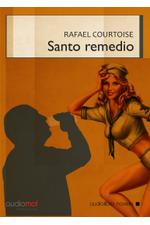 The audiobook of the week is Santo remedio by Rafael Courtoise. You just need your library card, click here and done! Just enjoy this story that won’t leave you indifferent.
The audiobook of the week is Santo remedio by Rafael Courtoise. You just need your library card, click here and done! Just enjoy this story that won’t leave you indifferent.
Euthanasia is used in this novel as a metaphor of an unhinged century. It is a lucid look to American reality. There is no restraint, no poetry, no calm. This novel is brutal and beautiful humanity. Vertigo, a spiritual and material journey. The best suspense, wild humour and tenderness in lethal doses.
Euthanasia, medical power, and the bussiness of traditional and alternative therapies circle and hound Pablo Green, victim and criminal, a young man who gabbles and insults in a bizarre English and suffers in simple Spanish, gets sick with fast food and climbs the hills of desperation after choosing his mother’s death. Crime and existential novel, implacable narrative machine, this story is made of human flesh and bumpy rides. Written with accuracy and subtle irony, each word is a hit in your conscience. Not a moment of tranquility: just beauty.
El audiolibro de la semana es Santo remedio de Rafael Courtoise. Solo necesitas tu carnet de la biblioteca, pulsar aquí y ¡hecho!, ya puedes disfrutar de esta historia que no te dejará indiferente.
La eutanasia como metáfora de un siglo desquiciado. Una mirada lúcida hacia la realidad americana. Ni un instante de mesura, ni una gota de poesía, ni una línea de quietud. Esta novela es humanidad brutal y hermosa. Vértigo, viaje material y espiritual. Suspenso del mejor, humor salvaje, ternura en dosis letales.
La eutanasia, el poder médico, el negocio de las terapias tradicionales y alternativas rondan y acosan a Pablo Green, víctima y victimario, joven que farfulla e insulta en un inglés bizarro y sufre en español liso y llano, se indigesta con fast food y trepa por las cimas de la desesperación luego de decidir la muerte de su madre. Novela policial y existencial, implacable maquinaria narrativa, este relato está hecho de carne humana y sobresaltos. Escrita con precisión y sutil ironía, cada palabra es un golpe de conciencia. Ni un segundo de tranquilidad: sólo belleza.
Workshop CANCELLED: Creative Sundays. Handcraft workshop for children aged 7-9 | Taller CANCELADO: Sábados creativos. Taller de manualidades para niños de 7-9 años
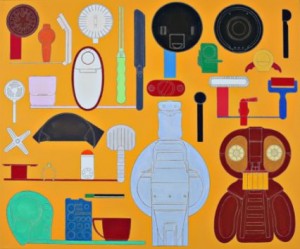 We always keep in mind our younger audience and this Saturday we bring you a handcraft workshop in Spanish for children aged 7-9. The workshop will start at 12:15 and will finish at 1.30pm.
We always keep in mind our younger audience and this Saturday we bring you a handcraft workshop in Spanish for children aged 7-9. The workshop will start at 12:15 and will finish at 1.30pm.
You will enjoy creating original and decorative objects or gifts using materials you can find at home (plastic bottles, tetra bricks, cereal boxes,…).
The different crafts will be adapted to each child skills. In the 7-9 years group children will create bracelets, a pencil holder, a vase with flowers and a frame with a spring picture.
Workshop conducted in Spanish by Raquel Hernanz.
Raquel Hernanz holds a degree in sociology and has ample experience as educator, Spanish teacher for children and children’s entertainer. She conducts handcraft and ballon twisting workshops.
The fee is €10 and you can register on line: https://clicdublin.cervantes.es/en/005-ep-c-02-e3
El público más joven también tiene su sitio en nuestra programación y este sábado te traemos un taller de manualidades en español para niños de entre 7 y 9 años. El taller comenzará a las 12:15 y termina a la 13:30.
El taller está diseñado para que usando materiales cotidianos, los niños disfruten creando objetos decorativos y regalos originales.
Las diferentes manualidades se adaptaran a las destrezas de cada niño. En el grupo de 7-9 años los niños crearán un florero, un cuadro primaveral, pulseras y un porta lápices.
Taller impartido en español por Raquel Hernanz.
Raquel Hernanz es licenciada en sociología y tiene una amplia experiencia como educadora, profesora de español para niños y animadora infantil. Asimismo es especialista en manualidades y globoflexia.
El precio del taller es de 10€. Te puedes registrar en línea a través del siguiente enlace: https://clicdublin.cervantes.es/en/005-ep-c-02-e3
Film screening | Cine: La muñeca del espacio
The Bealtaine Festival and Instituto Cervantes will bring you today an inspiring and touching story, The Swinging Doll. Don’t miss this great film today at 6pm in Café Literario.
Carmen Sánchez is an 84-year-old woman with an extraordinary story to tell. She was once a famous circus artist who traveled all over Europe swinging from her trapeze until an accident changed her life. She lives on her own and does things others would consider unusual for someone her age. In her daily life, anything is possible. Known as THE SWINGING DOLL when she was a famous trapeze artist, she was only 17 years old when she left Sitges, the small Spanish town where she was born, and married a clown belonging to the Rudí Llata Circus. She traveled with the troupe until 46 years ago when her world came crashing down. Nothing has been the same since.
El Festival Bealtaine y el Instituto Cervantes te traen hoy una conmovedora e inspiradora historia, La muñeca del espacio. No te pierdas esta estupenda película hoy a las 18:00 en el Café Literario.
Carmen Sánchez es una mujer de 84 años con una extraordinaria historia que contar. Fue una gran artista de circo que recorrió Europa subida en un trapecio hasta que un accidente cambió su vida. Vive sola y hace cosas impropias en alguien de su edad; en su mundo cotidiano todo es posible. Fue conocida como LA MUÑECA DEL ESPACIO, una gran trapecista. Con sólo 17 años abandonó Sitges, su pueblo natal, y se casó con un payaso de la troupe de los Rudi Llata. Viajó con el circo hasta que una tarde, hace 46 años, su mundo se vino abajo. Nada ha sido igual desde entonces.
